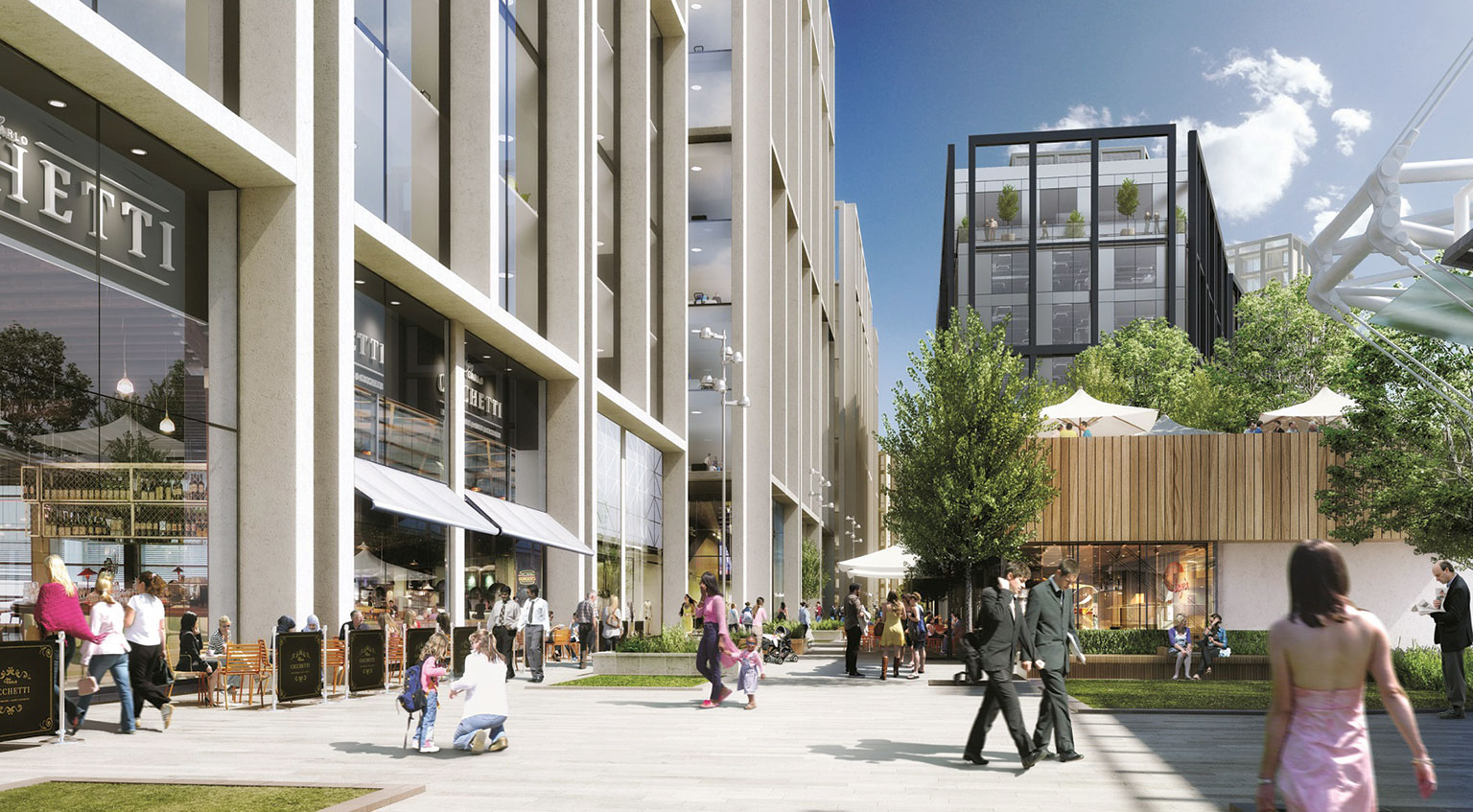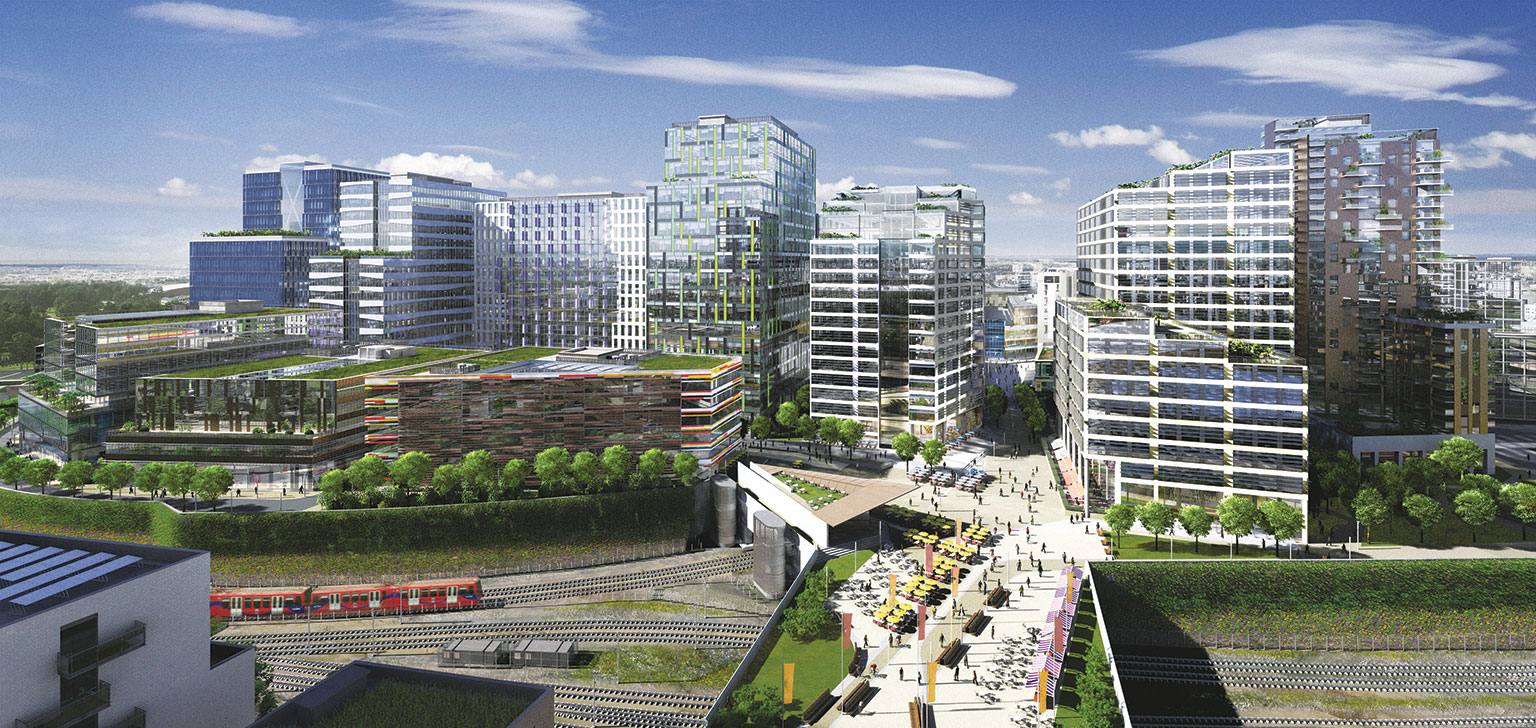The British public may soon need a new metonym for the civil service if George Osborne gets his way. As Fleet Street no longer quite rings true as a figure of speech for the long since departed British press, so Whitehall may one day be just be another street of offices, shops and hotels, rather than the beating heart of UK central government administration.
The chancellor has had the government estate on a crash diet since 2010, shrinking it by 20% since 2010 to 92m sq ft, 17m sq ft of which is in London, according to the latest State of the Estate report. But his announcement in March this year that departments in publicly owned freeholds would soon be charged a market rent was akin to telling them it was time to go.
While the plan remains in its infancy – and sceptics point to shelved schemes to move thousands of civil servants north back in 2004 – there is a very real expectation that several thousand jobs could soon be moving out of SW1.
And there are already early requirements in the hands of agents. Bilfinger GVA has picked up a wide-ranging public sector instruction taking in areas as disparate as Scotland, Wales and the North. But there are also rumours swirling of departments and agencies beginning to look to London’s fringes, with early hints from the Government Property Unit that it is these areas which will provide much of the early focus for its new multi-departmental hubs.
GPU chief operating officer Sherin Aminossehe told EG last month that she had two maps showing where the estate is and where it wants to be. “What we are saying is that there is the potential to put people within commuting distance of London. There are lots of discussions about where it should or could be – Stratford, Croydon or Wembley.”
Ofcom, Ofgem and others are already out in the market. As such, there is great excitement among those overseeing major regeneration schemes in London’s travel zones three to six, with the expectation that several million square feet of demand could come forth over the next few years. But which schemes are best placed to capture it? Here EG runs the rule over three of the most likely beneficiaries to see which stands the best chance of success.
The International Quarter, Stratford
Developer: Lend Lease and London and Continental Railways jv
Total office space: 4m sq ft
Planning status: Outline consent granted for entire scheme, construction well under way on first office and residential phases.
Leasing progress to date: 425,000 sq ft prelet to the Financial Conduct Authority and 250,000 sq ft prelet to Transport for London.
What’s next? Range of buildings available, subject to tenant demand, varying in size from 200,000 sq ft to 450,000 sq ft.
Key selling points: Established retail offer with Westfield Stratford, E15, green space and sporting facilities at the Queen Elizabeth Olympic Park, E15, the planned Olympicopolis cultural hub and transport links to central London including the Central Line, Jubilee Line, DLR, Overground and Crossrail in 2018.
Pros and cons: Lend Lease head of offices Kevin Chapman says the earliest the next buildings can be delivered to shell and core is 2018 and that is subject to securing a prelet of unspecified size. The company has a long history of avoiding speculative development, but Chapman points out that the original deal it agreed with the FCA – the first tenant to agree terms at The International Quarter – included a second speculative building which just happened to be leased by TfL soon after.
As things stand, there are no plans to green light another speculative building – something Chapman says is as much a reflection of the hot levels of demand from private sector occupiers as anything else – but with others seemingly prepared to spec elsewhere, this could be one small Achilles’ heel.
However, while Lend Lease’s build times appear slightly longer than some of its competitors, the fact the company has an in-house construction arm lends credibility that it can deliver when it says it will.
Quoting rent: Starting from around £45 per sq ft, depending on size of letting and location of plot.

Wembley Park
Developer: Quintain Estates
Total office space: 750,000 sq ft
Planning status: Outline consent
Leasing progress to date: Office phases launched in September with Colliers International and Cushman & Wakefield now actively marketing for prelets.
What’s next? Quintain has been working on the park for a decade and has established it as both a retail and residential location. The groundwork it has laid was considered sufficiently compelling to be the
key motivation for the company’s recent takeover by Lone Star funds.
The next test of the scheme, as well as building and selling the rest of the planned 5,500 homes, is to attract new business to an area which is only just starting to change its reputation from somewhere that is all about stadium- and arena-based events. The 750,000 sq ft of offices will be spread across four buildings of roughly equal size, subject to tenant requirements.
The most likely to go first is a 200,000 sq ft block on Olympic Way. All will have active retail frontages and floorplates in the region of 30,000 sq ft to 50,000 sq ft. At present, there are no plans to start speculatively, but Lone Star is undertaking a wholesale review of the company which could see a change in strategy.
Pros and cons: Quintain has the most work to do to sell the benefits of Wembley, but there are various weapons in its armoury. The London Designer Outlet centre has established Wembley Park as a retail destination, while the fact that it is just a 20-minute hop on the Jubilee Line from Bond Street is often overlooked, not to mention its additional transport links with the Overground and Metropolitan line.
The availability of modern, relatively affordable housing, both rented and for private sale, is also an increasingly significant factor for occupiers in London. Quintain chief operating officer James Saunders says the company can deliver the first office space within two years – that’s including securing detailed planning – a tight turnaround that he says is thanks to a supportive local council (Brent) and the fact the company has a strong panel of contractors with whom they have longstanding relationships. But crucially, he says, one of the key reasons Wembley will appeal is that it offers such a “substantial discount” to other parts of London.
Quoting rent: Likely to start at £30 per sq ft.
Ruskin Square, Croydon
Developers: Stanhope and Schroder jv
Total office space: 1.5m sq ft
Planning status: Outline consent for whole scheme, first office phase on site, detailed planning application for second phase submitted.
Leasing progress to date: Stanhope and Schroders have come close to landing a major tenant for the first building at Ruskin Square but, as things stand, the 190,000 sq ft block remains available, albeit with negotiations ongoing with occupiers.
What’s next? The first office building will complete in the final quarter of next year. As soon as it is leased, whether pre- or post-completion, attention will turn to the next building, which will be of similar size. No decision has been made over whether or not this building will be developed speculatively.
Pros and cons: Croydon is already an established office market and it is undergoing a huge transformation, with plans for a new shopping centre by Westfield and Hammerson. Transport connections to central London are good and at less than £35 per sq ft, office rents offer a substantial discount to Stratford.
While the shopping centre is unlikely to arrive until early in the next decade, Stanhope director Jason Margrave points out that plans for a food-focused Boxpark on part of the Ruskin Square site have been approved, highlighting the rapidly increasing vibrancy of the often unfairly maligned area. The other selling point – which few will discuss openly – is the politics of relocating government tenants.
While Stratford is a win given the need to cement the Olympic legacy, Croydon’s marginal status on the electoral map should not be underestimated.
Quoting rent: Under £35 per sq ft.
Occupier View
Peter Hewitt-Penfold, property and asset manager at the Financial Conduct Authority, says: “We looked at places like Croydon but the main attraction for us in going to Stratford was its ability to help us recruit. We wanted a tale to tell to attract people, and Stratford has that with its transport links, which will only get better, and a huge present impact for one-third of our staff that come in from the East.
“And then we also looked at the public realm. Being in Canary Wharf is great but there is not a lot of green space, so the park at Stratford was a massive sell. Every time I have taken people out to TIQ the park has been a wow factor.
“We have fantastic links to retail and it is affordable, and even if you wanted high-end it is only 10 minutes back on the DLR to Canary Wharf. The other bits are more nice-to-have, such as the Olympicopolis cultural epicentre, which would be right on our doorstep.”
Conclusion
Ultimately, there could be enough demand from government occupiers to more than go around all three schemes and several others in outer London which are at an earlier stage. But for now there is little real clarity on how many civil servants are likely to be moved out or any notion of exactly when they will move. As such, individual advantages, such as quoting rents or earliest delivery dates, could soon melt away or change markedly as both build costs and asking rents are likely to soar over the next two years.












